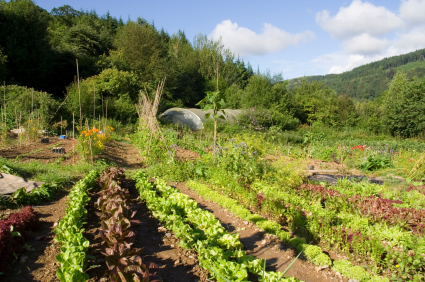 Wouldn’t a bit of atrazine liven up this scene?India is a major player on the global stage–hub of the information-technology market, the world’s second most populous nation, and a nuclear power to boot.
Wouldn’t a bit of atrazine liven up this scene?India is a major player on the global stage–hub of the information-technology market, the world’s second most populous nation, and a nuclear power to boot.
It would be a global-scale calamity if India’s food security became compromised–and that is exactly what’s happening, as NPR’s Daniel Zwerdling showed in three excellent reports last month.
In May, Zwerdling focused on the decay of industrial agriculture. His latest piece, which aired Monday, he turns to organic ag–which is becoming increasingly popular across the country as farmers grapple with declining soil quality and high costs for irrigation water and chemical inputs.
Zwerdling doesn’t mention it, but what we know as organic farming in the west has roots in India. In the early 20th century, just as European and U.S. agriculture was moving toward a mechanized, chemical-dependent model, a British plant pathologist named Albert Howard spent time in Barbados and India. His charge was to teach the “native” farmers in the colonies how to better grow food for the Mother Country.
But the “natives” had something to teach him instead. Observing how small-scale farmers in Barbados and India built soil fertility through composting and manure, and avoided pest troubles by creating the conditions for balanced insect populations, Howard codified the practices that would soon become known as “organic” in the West. The great engine for productive agriculture, Howard concluded, was biodiversity–both among crops and literally within healthy soil, which bristles with the life of billions of microorganisms..
So in many ways, the rise of organic agriculture in India is really a return, a revival.
Zwerdling’s story doesn’t paper over the difficulties of switching from chemical-based to organic ag. He focuses on Amarjit Sharma, a farmer in the Punjab, India’s breadbasket. There, farmers fully embraced the Green Revolution–the effort, starting in the late 1960s, to move to large-scale, mechanized farming with heavy irrigation and lots of synthetic fertilizers and pesticides.
Sharma farmed that way for years, but went organic in 2005, after seeing his wheat yields stagnate and his agrichemical bills rise to crushing levels. Now, his rice yields are nearly equal to those of chemical-oriented farmers, but his wheat yields are just half. Zwerdling asks him about that, and Sharma has an excellent reply.
“I’ve been farming organically only for four years now. My land is still recovering from the Green Revolution. So I’m sure my yields will increase,” he says.
Imagine how much organic farmers might be able to produce, Sharma says, if India’s government spent even a fraction of the billions of dollars it has spent promoting chemical farming.
Zwerdling reveals that things have gotten so bad on India’s conventional farms that even major players in ag policy are starting to promote organic in a serious way–and not as a trendy but ultimately frivolous niche, the way the USDA treats it here. Zwerdling quotes Gurcharan Kalkat, chair of the Punjab State Farmers Commission:
“For 70 percent of the area in the country (outside Punjab), farmers must go for organic farming,” he says, because organic methods will replenish the soil and improve their productivity. As for Punjab, the report concluded that 20 percent of its farmers could go organic and remain productive, too.
That might sound timid, but imagine if the president of the American Farm Bureau called for transitioning 20 percent of the Corn Belt–and 70 percent of farmland outside it–to organic.
Already, Indian farmers are transitioning in growing numbers. In many ways, India’s movement against chemical farming is stronger than ours here in the United States. According to Zwerdling:
India has about three times the population of the U.S., but 30 times more organic farmers than the U.S.
India’s farmers have already taught the world plenty about low-impact, highly productive farming. Apparently, they’re not done.



